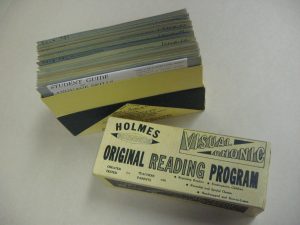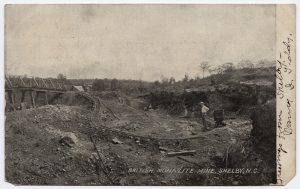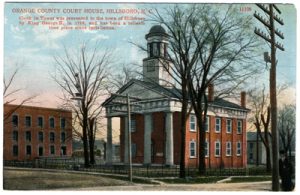Rock Branch (Harnett County) was home to a health resort named Eden Colony, which was developed by W.W. Giles. John Hairr provides a brief history of Eden Colony in his book Harnett County, A History. In 1906, Giles bought 1,200 acres of land, divided it into 60 plots on both sides of the railroad tracks for dwellings, and left a large open section of land for daily exercise.
According to Hairr, the early success of the resort community was based on dewberry farming and heavy advertising. The postcard of Eden Colony above shows two views of the town, including a cottage and a view of the town, including the railroad tracks, the post office, and some green space. Giles would advertise the community with pamphlets, booklets, postcards, all in addition to the big sign that was visible from Rock Branch’s train depot.
Just before World War I, the demand for dewberries dropped significantly – in 1913, the town was renamed to Olivia, in honor of W.J. Olive, who introduced flue-cured tobacco to the area in 1912.
There are several other postcards showing dewberry farms in the Sandhills region in our online collection. You can view them here.












